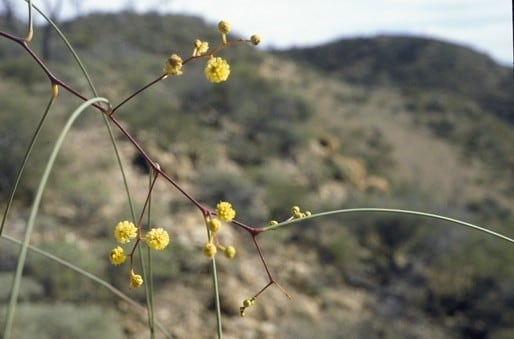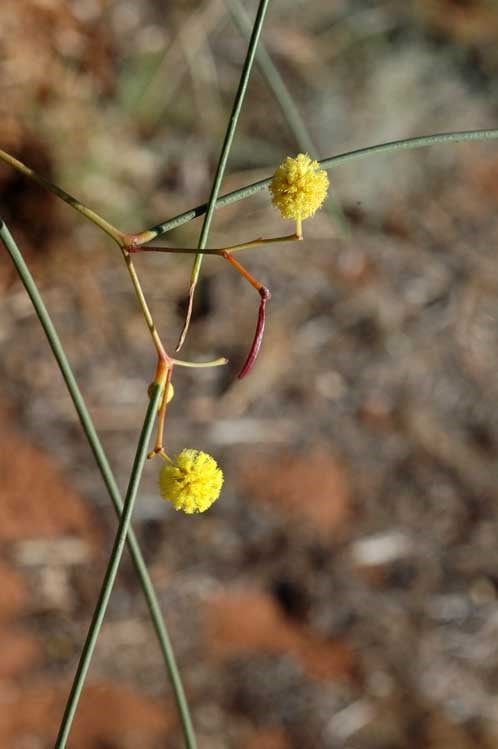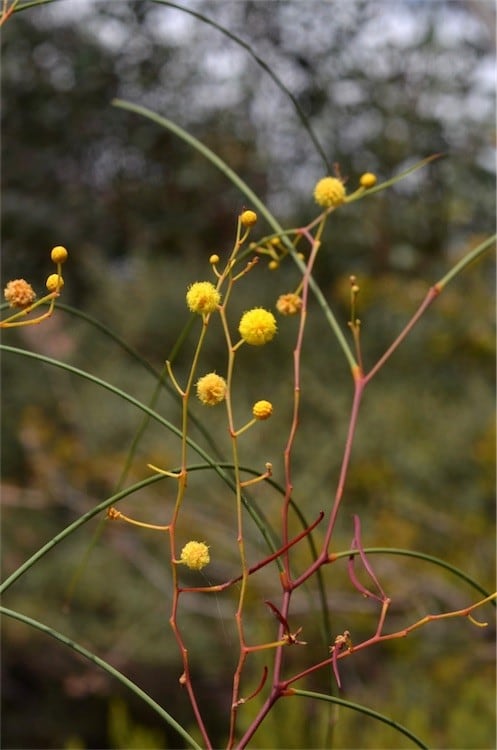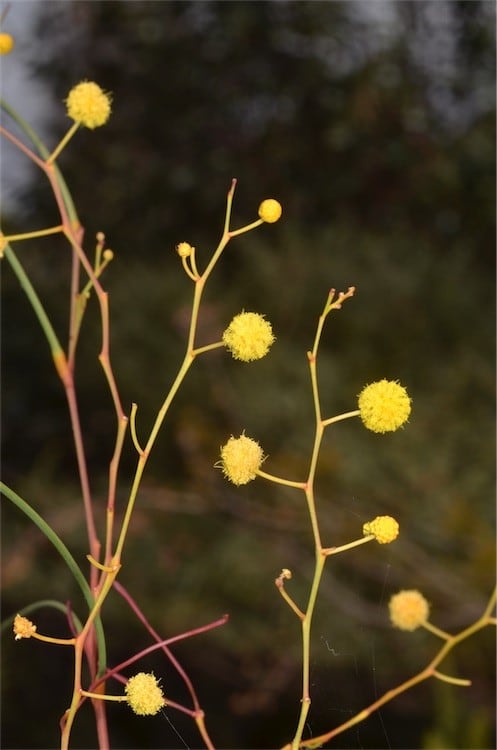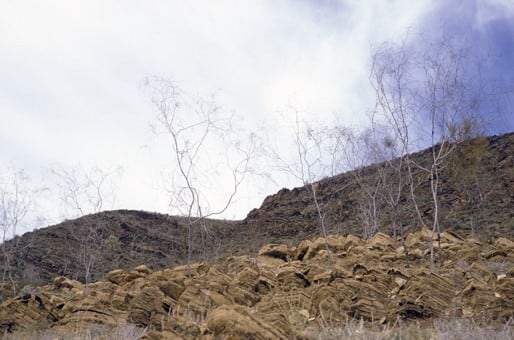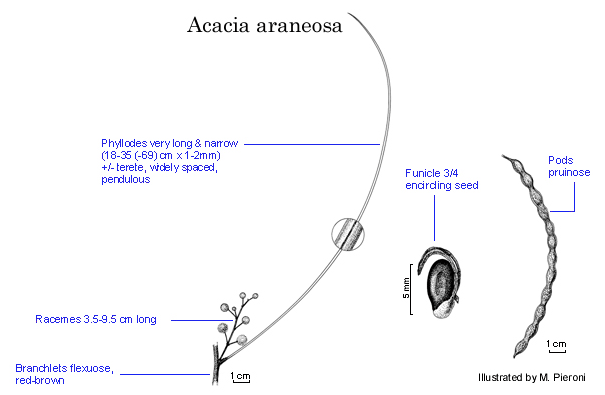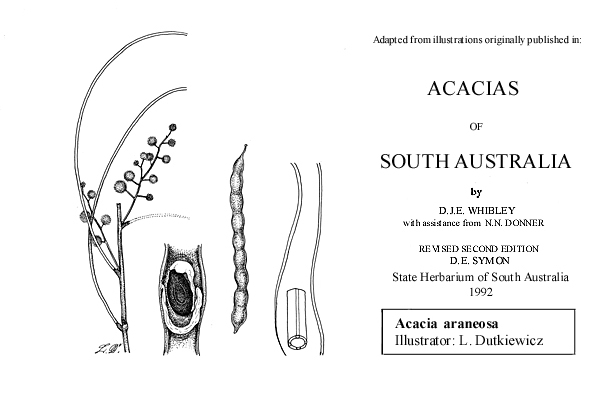Acacia araneosa Whibley
WATTLE
Acacias of Australia
Common Name
Spidery Wattle, Balcanoona Wattle
Family
Fabaceae
Distribution
Restricted from near Balcanoona to Arkaroola, North Flinders Ra., S.A.
Description
Wispy tree 3–8 m high. Branchlets slender, flexuose, red-brown, glabrous. Phyllodes distant, pendulous, thickly filiform, usually terete to subterete or ±quadrangular, 18–35 cm long, sometimes to 69 cm, usually 1–2 mm wide, delicately narrowed at apex, glabrous, sometimes scurfy, obscurely 4-nerved in all; pulvinus 2–4 mm long. Inflorescences racemose; raceme axes 3.5–9.5 cm long, glabrous; peduncles 7–10 mm long, glabrous; heads globular, 50–70-flowered, yellow; bracteoles peltate, golden-fimbriolate. Flowers 5-merous; sepals united almost to their apices. Pods linear, somewhat constricted between seeds, to 14.5 cm long, 4–6 mm wide, firmly chartaceous to thinly coriaceous-crustaceous, pruinose, glabrous. Seeds ±longitudinal, elliptic, c. 4.5 mm long, dull to slightly shiny, black; funicle 3/4 encircling seed in a single fold, red-brown; aril clavate.
Habitat
Grows in calcareous soil on hills and ridges associated with Eucalyptus gillii and/or Triodia irritans.
Specimens
S.A.: Nudlamutana Well, c. 15 km NNE of Balcanoona, D.J.E.Whibley 3888 (AD, PERTH).
Notes
A putative hybrid with A. rivalis occurs within the main population of A. araneosa near the type locality; it is characterised by flat phyllodes 1–3 mm wide (e.g. D.J.E.Whibley 2173, PERTH).
A member of the ‘Acacia microbotrya group’ characterised by a distinctive cobwebby habit and very long, narrow phyllodes. These features are similar to those of A. aphanoclada, a W.A. member of the unrelated ‘A. victoriae group’.
FOA Reference
Data derived from Flora of Australia Volumes 11A (2001), 11B (2001) and 12 (1998), products of ABRS, ©Commonwealth of Australia
Author
B.R.Maslin
This identification key and fact sheets are available as a mobile application:
URL: https://apps.lucidcentral.org/wattle/
© Copyright 2018. All rights reserved.
